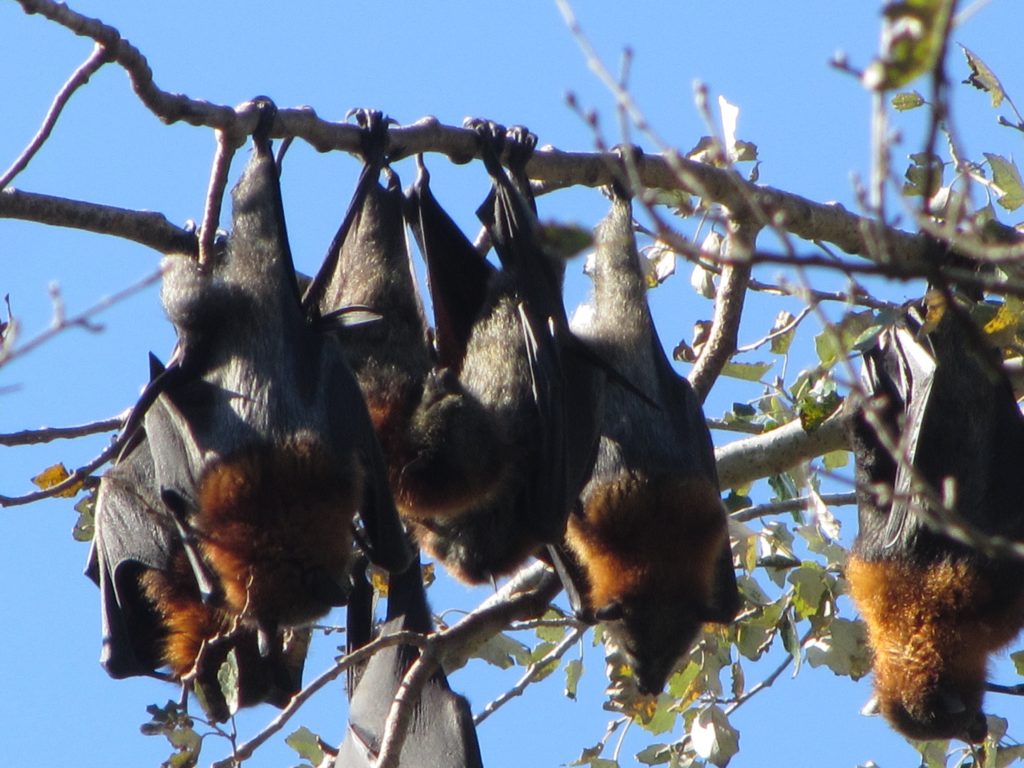GREY-HEADED Flying foxes
OVERVIEW
A Grey-headed Flying-fox (GHFF) camp of National Importance is located in the Wolli Creek Valley in bushland close to the creek, and not far west of Turrella Reserve. Although it’s possible that the GHFF roosted in the Valley in earlier times, the current camp dates from mid-2007. At that time there were a few hundred GHFF. The camp has since grown to thousands, with fluctuations in the population occurring throughout the year/s.
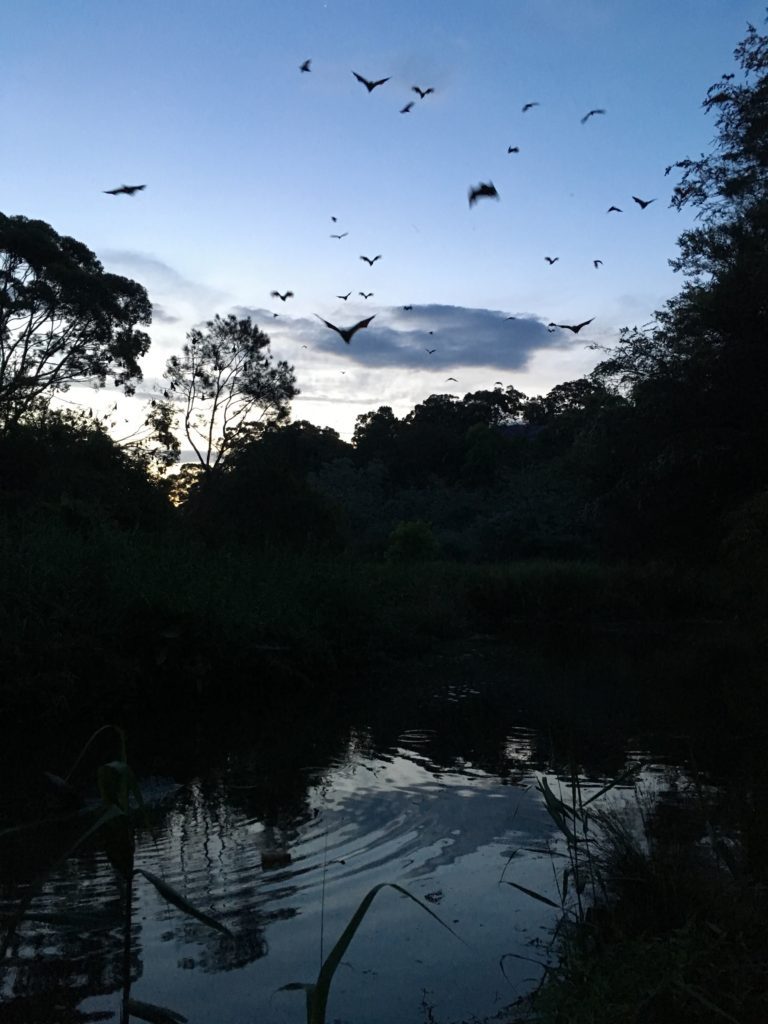
In November 2016 around 24,000 Flying-foxes were counted, which is the highest number yet recorded. Ongoing population information is obtained by monthly ‘fly-out’ counts; ie counting the number of GHFF as they exit their camp to feed for the night. WCPS volunteers have been conducting these fly-out counts since April 2008 (see monthly fly-out counts for more on this WCPS volunteer activity), when a research project sought to obtain data about the population dynamics and movements of the GHFF across their range. This research involved monthly, synchronised counts of as many GHFF camps as possible up and down their range along the east coast of Australia.
Since then volunteers have continued monthly monitoring of the the population of GHFF at Turrella/Wolli creek. We also contribute data to the the National Flying Fox Monitoring Program (NFFMP) via quarterly counts. The NFFMP is a collaborative project between Federal and State Governments, which aims to establish a reliable benchmark for the size of flying-fox populations, and to monitor population trends in later years. GHFF are listed as a ‘vulnerable’ species under both NSW and Federal legislation. It is also on the International Union for The Conservation of Nature’s (IUCN’s) red list of threatened species. Habitat destruction is one the leading causes of their decline in numbers.
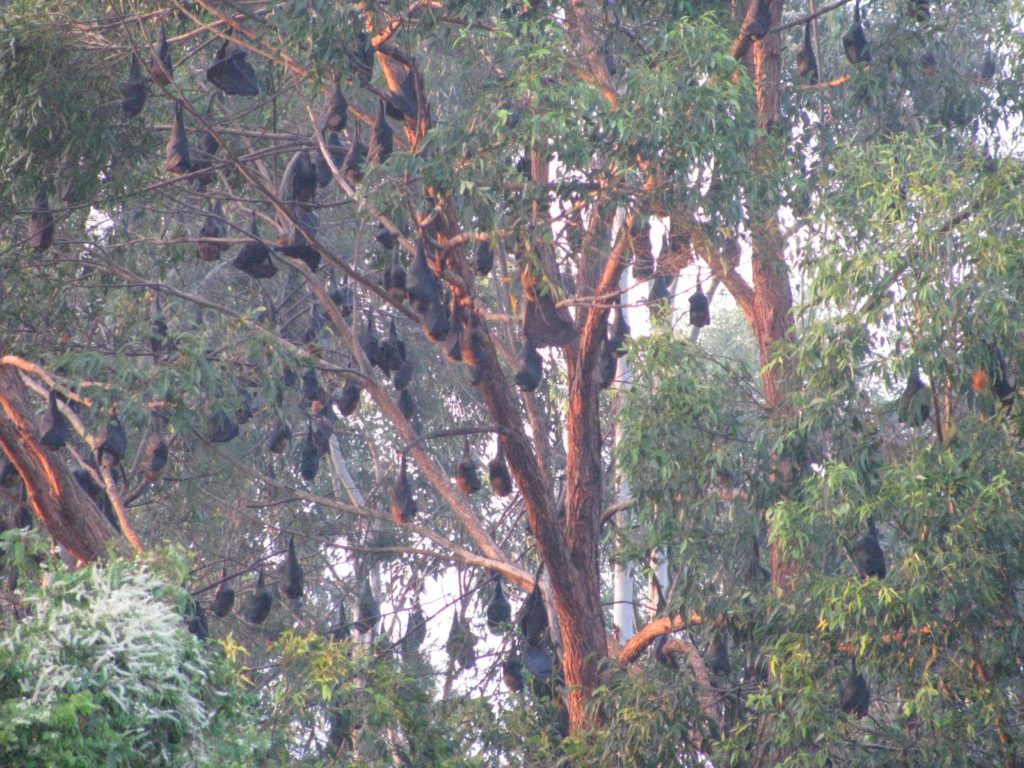
The Wolli Valley camp is generally occupied continuously throughout the year, so it is called a permanent, as opposed to a seasonal camp. However, in some years when there is good flowering of particular Eucalyptus tree species – which are significant food sources for the GHFF – they may leave their Wolli (and other Sydney) camps for other areas of NSW, or south-east Qld. This can lead to high concentrations of GHFF in those areas for the duration of the flowering period.
In common with many GHFF camps, the Wolli camp is located close to water, a section of Wolli Creek, which provides an important source of water for the GHFF. On hot evenings, they can be seen dipping into the creek to cool off, and obtain water, before going out to feed for the night. After belly-dipping into the water (which takes skill to master) they land in nearby trees, then lick the water off their belly fur. See a great video of this activity.
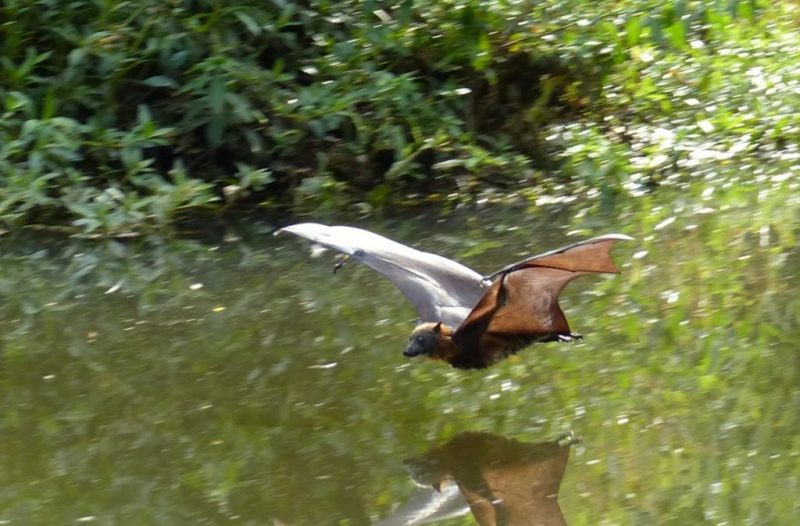
ADVOCACY
In its advocacy work for the GHFF, WCPS has been involved in educational activities aimed at promoting better understanding and support for them. An annual ‘Bat Watch Picnic’ event is held in Turrella Reserve, usually in March, in conjunction with Australasian Bat Night. Watch videos of the picnics in March 2015 and March 2016 and see photos from the 2017, 2018 and 2019 events. WCPS has also organised walks and talks, including for local schools.
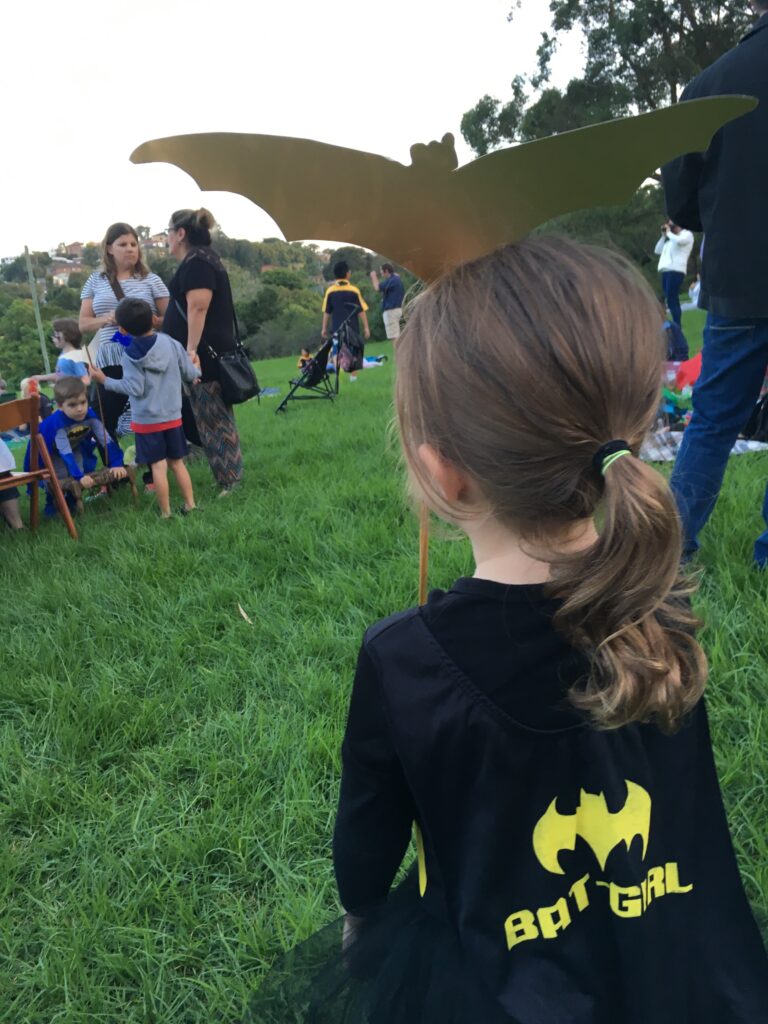
SOME GREY-HEADED FLYING-FOX FACTS
- The scientific name of the Grey-headed Flying-fox is Pteropus poliocephalus.
- They:
- are warm-blooded, nomadic, social mammals.
- have a wingspan of roughly a metre, and weigh up to a kilogram
- are often called fruit bats, but they feed mainly on the blossoms (nectar and pollen) of Eucalyptus, Melaleuca, Turpentine and Banksia trees, as well as rainforest fruits (eg Figs, Lilly Pillys). They will feed on cultivated fruit when there is a shortage of their native food.
- feed at night and generally travel within a radius of up to 30 km from their camp, visiting a number of trees along the way.
- play an important role in maintaining forests along the east coast of Australia, as they pollinate blossoms and spread seeds during their long distance travels in search of food. They are called long distance pollinators.
- have many different calls. These calls become louder in the mating season (March to May), when the males ‘shout’ in the face of females as part of their breeding ritual, and there are squabbles over territory. They also can be heard while out and about feeding in trees at night, as they defend their feeding territory.
- are in great danger of dying when temperatures reach 40+ degrees C, particularly the pups. Many fatalities occur in camps due to heat stress and dehydration. See a video of a rescue of pups which took place in the Wolli Valley on 18 January 2013 when the temperature in Sydney reached 46 degrees C.
- Justin Welbergen from Western Sydney University, along with other researchers has been studying the effects of heat stress on Flying-foxes – see Responding to Heat Stress in Flying-fox Camps (PDF) and The Flying-fox Heat Stress Forecaster.
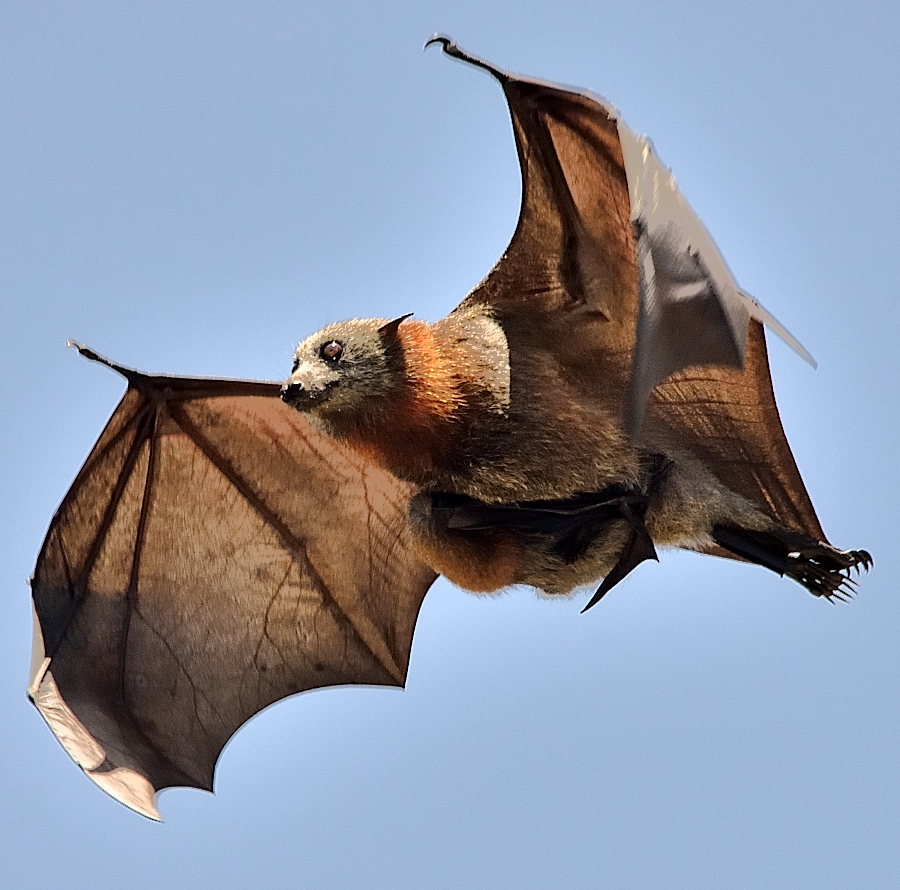 Only one baby is born each year, usually around October. In urban areas at this time, and for the next few months as pups are born, female GHFF are particularly in danger of coming into contact with and dying on electric power lines as they carry the (increasing) weight of their young (up to 3 week old) pups while out feeding. Their pups however can often survive this tragedy. For information on what to do if you see a GHFF hanging from power lines download the info sheet ‘Flying Foxes on Power lines’ (PDF).
Only one baby is born each year, usually around October. In urban areas at this time, and for the next few months as pups are born, female GHFF are particularly in danger of coming into contact with and dying on electric power lines as they carry the (increasing) weight of their young (up to 3 week old) pups while out feeding. Their pups however can often survive this tragedy. For information on what to do if you see a GHFF hanging from power lines download the info sheet ‘Flying Foxes on Power lines’ (PDF).- Despite the numbers now seen in urban areas around Sydney, overall GHFF numbers have dramatically declined. In 2001 The Commonwealth, NSW and Victorian governments listed the GHFF as a threatened species. It has been classified as ‘vulnerable’. In early 2020, after many years in preparation, the Federal Government released the National Recovery Plan for the Grey-Headed Flying-fox. In December 2021 the Grey-headed Flying-fox was added to the International Union for the Conservation Of Nature’s (IUCN’s) red list of threatened species
- It’s estimated that the area of habitat available for GHFFs has been reduced by 50% since European occupation. Human activities such as land clearing for agriculture and urban expansion have lead to this reduction.
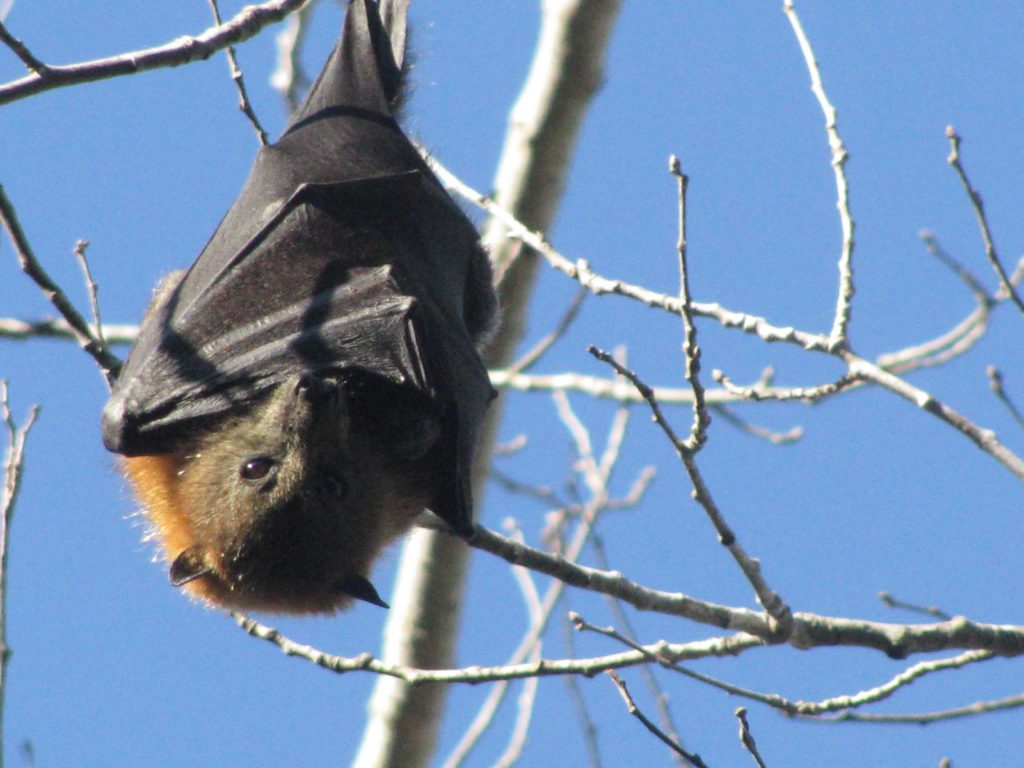
CARE AND PREVENTION OF INJURY
If you encounter an injured Grey-headed Flying-fox, do not handle the animal. Do contact WIRES on 8977 3333, or Sydney Wildlife on 9413 4300. They can organise a trained rescuer who has been vaccinated against diseases Flying-foxes can (rarely) carry (such as Lyssa and Hendra virus). Please note: Flying-foxes do not transmit Covid-19. The virus that is responsible for Covid-19, SARS-CoV-2 is now a human virus, transmitted by humans. See this article for more on bats and Covid-19.
Many Flying-foxes become entangled in netting placed over fruit trees. Do not try to disentangle the Flying-fox yourself, but call the WIRES or Sydney Wildlife number listed above. You can prevent injury and possible death to Flying-foxes and protect your fruit by installing wildlife friendly netting.
Here are some videos of rescued young GHFF in the care of dedicated and vaccinated wildlife carers: eating grapes, having a bath, this amazing video of a rescued flying-fox, and the rescue of two abandoned pups from the Wolli camp. Bat counter and rescuer Meg’s Youtube channel Megabattie has many more great videos of rescues and after care.
Further background information on and stories about Flying-foxes:
- Article by Andrew Smith
- A ‘rap version’ of GHFF facts (a Bat Rap by Peter Noble)
- An engaging TEDx talk on GHFF (2013), by wildlife ecologist Tim Pearson
- A great video from Tim Faulkner (Australian Reptile Park)
- The ABC’s Dr Ann Jones features in this video “Are bats the most misunderstood animals in Australia“
- A story on the Wolli camp from ABC Everyday in early 2021 featured WCPS
members - A great GHFF facts summary by one of the youngest Wolli bat (fly-out) counters, Annabelle. Annabelle is 8 years old (2024) and presented a power point presentation on GHFF to her class mates. See her video here https://youtu.be/XhcFZLRGvCY
- There are also some good, positive media articles well worth reading from The
Conversation, The Sydney Morning Herald and the ABC news sites, eg:- Not in my backyard? How to live alongside flying-foxes in urban Australia (The Conversation)
- Why we shouldn’t be so quick to demonise bats (The Conversation)
- ‘Big nocturnal bees’: the secret life of bats (SMH)
- Some things you may not know about fantastic flying foxes (ABC)
- Flying foxes increasing in urban areas means more potential conflict with humans (ABC)
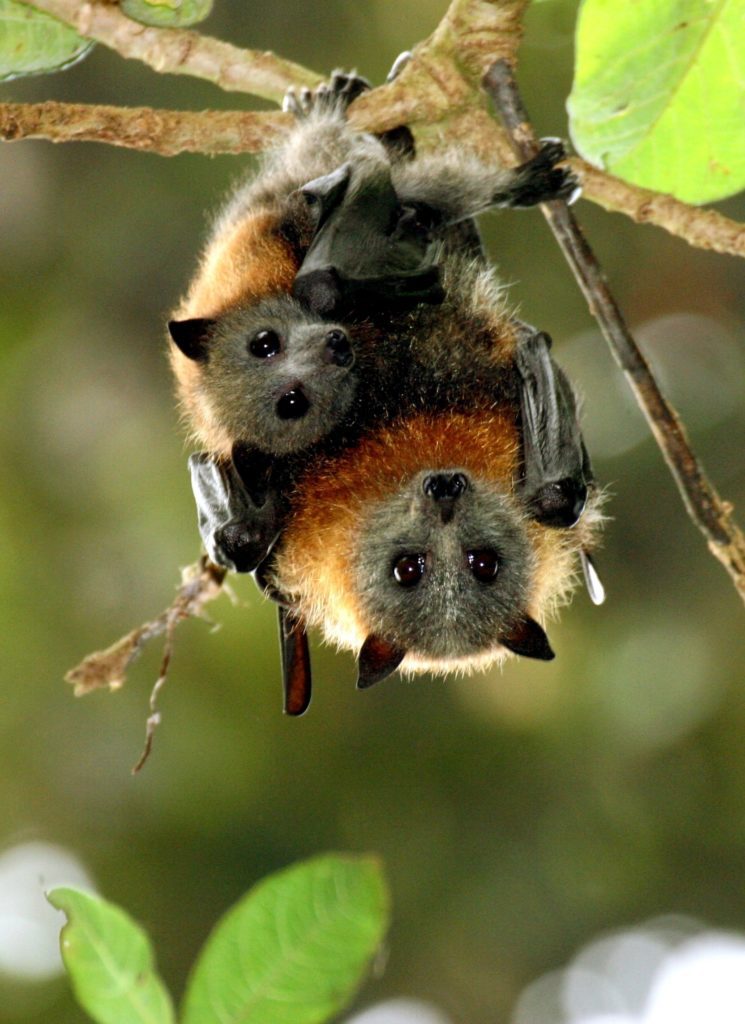
USEFUL WEBSITES AND LINKS
- Sydney Bats – Flying-foxes in Sydney. Contains lots of useful information and links to other relevant websites
- Australasian Bat Society
- NSW Department of Planning and Environment
- Information from The Australian Museum website
- Plants and GHFF – For information about native plants of the Wolli valley that can provide food for GHFF, see Wildlife Habitat Plants of the Wolli Valley
